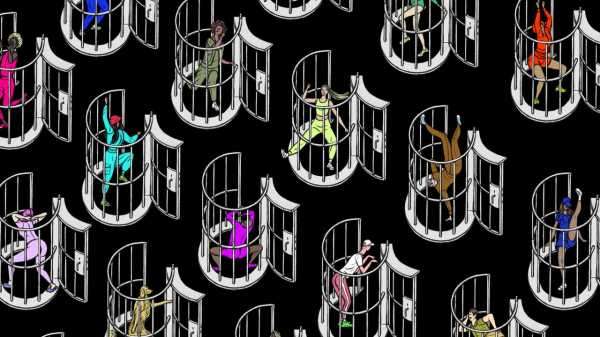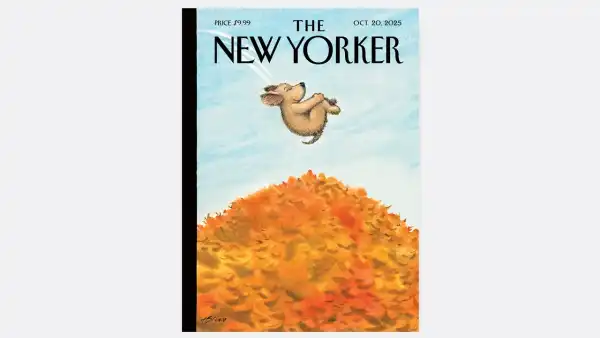
Last month, Blake Chandlee, TikTok’s president of global business solutions, was asked if he was concerned about competition from existing social-media networks like Facebook. Chandlee, who spent more than twelve years at Mark Zuckerberg’s company before moving to TikTok, dismissed the idea. “Facebook is a social platform. They’ve built all their algorithms based on the social graph,” he said, referring to the network of links to friends, family, and casual acquaintances that Facebook users painstakingly assemble over time. “We are an entertainment platform. The difference is significant.” Chandlee appeared to be responding to recent moves made by Facebook. Last year, the company integrated a TikTok-style short-video format called Reels directly into its main app. Then, in an internal memo sent this spring, Tom Alison, a senior executive at the social-media giant, announced a plan to modify the platform’s news feed to focus more on these short videos, tweaking the algorithm to display the most engaging content, even if these selections are “unconnected” to accounts that a user has friended or followed. Facebook, it seems, is moving away from its traditional focus on text and images, spread among people who know one another, to instead adopt TikTok’s emphasis on pure distraction. This shift is not surprising given TikTok’s phenomenal popularity, but it’s also shortsighted: platforms like Facebook could be doomed if they fail to maintain the social graphs upon which they built their kingdoms.
To understand Facebook’s current danger, it helps to better understand its original success. In the spring of 2004, when my college friends signed up for TheFacebook.com, as it was then called, they did so because other people they knew were signing up as well. (One of the platform’s early killer features was the ability to check the “relationship status” of classmates.) By the end of 2006, the year in which Facebook opened to the general public, the service had already gathered twelve million active users. At that point, network-effect advantages made it hard for a competitor to emerge; two years later, when Facebook hit a hundred million active users, competition became all but impossible. Why would you join a new network dedicated to connection with people you know if everyone you knew was already on Facebook?
The next major evolution of this model of leveraging a social graph to create engagement was sparked by Twitter. Though it was launched in 2006, this short-messaging service didn’t achieve broader notice until 2009. This was the year in which Ashton Kutcher discussed Twitter on “The Oprah Winfrey Show.” It was also the year in which the news leaked that a U.S. State Department official e-mailed the company, urging it to delay planned server maintenance so as not to interfere with planned pro-democracy protests in Iran. For Twitter, however, arguably the most important event of 2009 was not these publicity bonanzas but the introduction of the retweet button. This tweak, originally intended to simplify the common practice of manually cutting and pasting the text of interesting tweets, ended up transforming Twitter. By eliminating the friction required to forward a message to all of your followers, the retweet button created a fierce viral dynamic in which a single tweet could be amplified to a large audience in a short period of time, its readership expanding exponentially through the power-law topology of the Twitter network. This turned out to be a phenomenally effective method for surfacing the most engaging content floating around the platform at any given moment. This potential for sudden mass exposure also began to draw more influential individuals to the platform, further increasing the value of its content.
As with Facebook, the larger that Twitter’s social graph grew, the more attractive the network became. Pretenders to the short-message throne, such as Parler or Gab, struggled to get traction, as their networks lacked sufficient size and numbers of influential users to compete in a battle for attention. By 2011, Twitter, following in Facebook’s footsteps, passed the milestone of a hundred million users. Facebook, of course, noticed this new competitor’s fast rise and began to make adjustments. Between 2009 and 2011, Facebook increasingly moved its news feed away from chronological sorting and toward an emphasis on popular posts. Then, in 2012, it added a retweet-style Share button on its mobile app, enabling the Twitter-style exponential spread of third-party content through the network.
Both Facebook and Twitter were built on the same general model of leveraging hard-to-replicate, large social graphs to generate a never-ending stream of engaging content, a strategy that proved to be robust in the face of new competition and incredibly lucrative. It’s why, last month, Meta, the parent company of Facebook, had a market cap of five hundred and sixty-two billion dollars, making it the world’s seventh most valuable corporation. It’s also why Twitter, a smaller and more specialized social-media network, was still worth forty-four billion dollars to Elon Musk (before he changed his mind). Pseudo-monopolies of this type, however, cannot last forever. The past decade has been good for these social-media giants, but the sudden ascent of TikTok might turn out to be the disruption that finally ends their reign.
When you load TikTok, you’re presented with a short video, often well under a minute in length, filling your smartphone screen. When you’re ready to see something different, you swipe up, and a new video, selected specifically for you by the service’s recommendation algorithm, is pulled in to take over the display. If you observe a TikTok session over the shoulder of a practiced user, you’ll encounter a frenetic sequence of swipes, with most videos watched for only a few moments to assess their appeal, before being pushed away to sample what’s next.
The effectiveness of the TikTok experience is found in what it doesn’t require. Unlike Twitter, TikTok doesn’t need a critical mass of famous or influential people to use it for its content to prove engaging. The short-video format grabs the user’s attention at a more primal level, relying on visual novelty, or a clever interplay of music and action, or direct emotional expression, to generate its appeal. And, unlike Facebook, TikTok doesn’t require that your friends already use the service for you to find it useful. Though there are some social features built into TikTok, they’re not the main draw of the app. TikTok also doesn’t rely on its users to manually share content with friends or followers to surface compelling offerings. It assigns this responsibility to its scary-good recommendation algorithm. A 2021 investigation by the Wall Street Journal, in which reporters created more than a hundred TikTok accounts to tease out the basic dynamics of this suggestion logic, showed that the app can target a user’s interests with uncanny accuracy in as little as forty minutes of observation.
This rejection of the social-graph model has allowed TikTok to circumvent the barriers to entry that so effectively protected early social-media platforms like Facebook and Twitter. By separating distraction from social connection, TikTok can directly compete for users without the need to first painstakingly build up an underlying network, link by link. By all accounts, this attention blitzkrieg is working incredibly well. TikTok is estimated to have a billion active monthly users, a number it achieved in a breathtakingly short time, and according to some reports it boasts an average session length of 10.85 minutes, which, if true, would be far longer than that of any other major social-media app. Meanwhile, Facebook’s parent company recently lost more than two hundred and thirty billion dollars in market capitalization in a single day after the company announced that user growth had stalled. Analysts identified TikTok as an important factor in this slowdown.
These developments put traditional social-media companies like Facebook in a perilous bind. It’s obvious that, if they don’t make moves to arrest the flow of users from their platforms to TikTok, their investors will revolt and valuations will continue to fall. This explains Facebook’s recent transition toward short videos and algorithmic recommendations of content that doesn’t come from friend groups. Perhaps less obvious, however, is the longer-term danger in shifting away from the connection-centric model that has served the company so well. It’s unlikely, at this point, that a new competitor will ever again be able to build a social graph of a size or a level of influence comparable to those of legacy platforms like Facebook and Twitter—it’s simply too hard to start from scratch when these mature services already exist. It follows that, so long as these legacy platforms rely on their underlying networks as their primary source of value, they will retain a monopolistic protection of sorts within the broader attention economy. If they instead move away from their social-graph foundations to concentrate on optimizing in-the-moment engagement, they’ll enter a competitive landscape that pits them directly against the many other existing sources of mobile distraction—not just TikTok but also more bespoke and specialized social networks, such as the Gen-Z sensation BeReal, to say nothing of popular video streamers, podcasts, video games, self-improvement apps, and, for the somewhat older demographic to which I belong, Wordle.
This all points to a possible future in which social-media giants like Facebook may soon be past their long stretch of dominance. They’ll continue to chase new engagement models, leaving behind the protection of their social graphs, and in doing so eventually succumb to the new competitive pressures this introduces. TikTok, of course, is subject to these same pressures, so in this future it, too, will eventually fade. The app’s energetic embrace of shallowness makes it more likely, in the long term, to become the answer to a trivia question than a sustained cultural force. In the wake churned by these sinkings will arise new entertainments and new models for distraction, but also innovative new apps and methods for expression and interaction.
It’s here that I find optimism. The era of social-media monopolies has been unhealthy for our collective digital existence. The Internet at its best should be weird, energetic, and exciting—featuring both homegrown idiosyncrasy and sudden trends that flash supernova-bright before exploding into the novel elements that spur future ideas and generate novel connections. This exuberance was suppressed by the dominance of a small number of social-media networks that consolidated and controlled so much of online culture for so many years. Things will be better once this dominance wanes. In the end, TikTok’s biggest legacy might be less about its current moment of world-conquering success, which will pass, and more about how, by forcing social-media giants like Facebook to chase its model, it will end up liberating the social Internet. ♦
Sourse: newyorker.com






